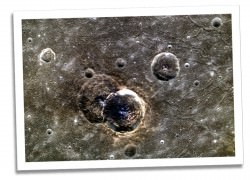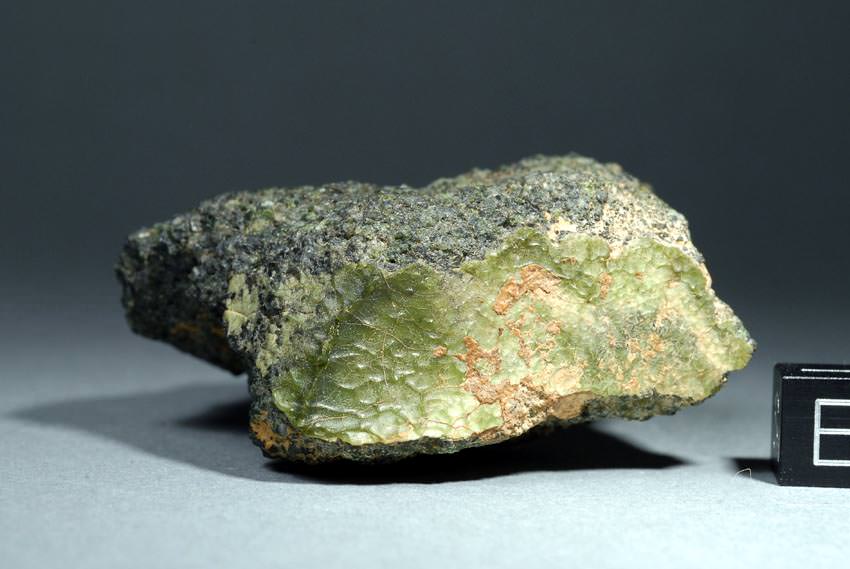The largest fragment of meteorite NWA 7325 (Photo © Stefan Ralew / sr-meteorites.de)
Pieces of the Moon and Mars have been found on Earth before, as well as chunks of Vesta and other asteroids, but what about the innermost planet, Mercury? That’s where some researchers think this greenish meteorite may have originated, based on its curious composition and the most recent data from NASA’s MESSENGER spacecraft.
NWA 7325 is the name for a meteorite fall that was spotted in southern Morocco in 2012, comprising 35 fragments totaling about 345 grams. The dark green stones were purchased by meteorite dealer Stefan Ralew (who operates the retail site SR Meteorites) who immediately made note of their deep colors and lustrous, glassy exteriors.
Ralew sent samples of NWA 7325 to researcher Anthony Irving of the University of Washington, a specialist in meteorites of planetary origin. Irving found that the fragments contained surprisingly little iron but considerable amounts of magnesium, aluminum, and calcium silicates — in line with what’s been observed by MESSENGER in the surface crust of Mercury.
 And even though the ratio of calcium silicates is higher than what’s found on Mercury today, Irving speculates that the fragments of NWA 7325 could have come from a deeper part of Mercury’s crust, excavated by a powerful impact event and launched into space, eventually finding their way to Earth.
And even though the ratio of calcium silicates is higher than what’s found on Mercury today, Irving speculates that the fragments of NWA 7325 could have come from a deeper part of Mercury’s crust, excavated by a powerful impact event and launched into space, eventually finding their way to Earth.
In addition, exposure to solar radiation for an unknown period of time and shock from its formation could have altered the meteorite’s composition somewhat, making it not exactly match up with measurements from MESSENGER. If this is indeed a piece of our Solar System’s innermost planet, it will be the first Mercury meteorite ever confirmed.
But the only way to know for sure, according to Irving’s team’s paper, is further studies on the fragments and, ultimately, sample returns from Mercury.
Irving’s team’s findings on NWA 7325 will be presented at the 44th Lunar and Planetary Science Conference to be held in Houston, TX, on March 18-22. Read more in this Sky & Telescope article by Kelly Beatty.
Inset image: impact craters located within Mercury’s Caloris Basin (NASA/JHUAPL)

